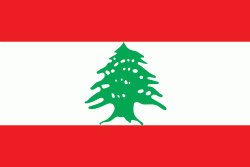Baabda
Baabda (بعبدا) is the capital city of Baabda District as well as the capital of Mount Lebanon Governorate, western Lebanon. Baabda was the capital city of the autonomous Ottoman Mount Lebanon. Baabda is known for the Ottoman Castle (the serail) and it has many embassies (Italian, Japanese, Jordanian, Polish, Ukrainian, Romanian, Indonesian, Spanish ... ), the Ministry of Defense and many important organization and administrative centres in Lebanon.
Baabda Palace, residence of the President of Lebanon is also located in Baabda. The palace was built in 1956 on a hill in the mountain town of Baabda overlooking the Lebanese capital, Beirut. The first President to reside in it was President Charles Helou (25 September 1913 – 7 January 2001)
During his two years, 1988 to 1990, as Lebanon's interim Prime Minister, Michel Aoun took up residence in the Baabda Palace surrounded by those troops from the Lebanese army who had remained loyal to him.
Also in Baabda, Dany Chamoun was assassinated with his family in 1990, after Aoun had fled the presidential palace to seek shelter in the French Embassy in Baabda.
Baabda Palace, residence of the President of Lebanon is also located in Baabda. The palace was built in 1956 on a hill in the mountain town of Baabda overlooking the Lebanese capital, Beirut. The first President to reside in it was President Charles Helou (25 September 1913 – 7 January 2001)
During his two years, 1988 to 1990, as Lebanon's interim Prime Minister, Michel Aoun took up residence in the Baabda Palace surrounded by those troops from the Lebanese army who had remained loyal to him.
Also in Baabda, Dany Chamoun was assassinated with his family in 1990, after Aoun had fled the presidential palace to seek shelter in the French Embassy in Baabda.
Map - Baabda
Map
Country - Lebanon
 |
 |
| Flag of Lebanon | |
The earliest evidence of civilization in Lebanon dates back to 5,000 BCE. From c. 3200–539 BC, it was home to the flourishing Phoenician civilization before being annexed by various Near Eastern empires. In 64 BC, the Roman Empire conquered the region, and the region became a major center for Christianity under the Byzantine Empire. In the 7th century, the Muslim conquest of the Levant established caliphal rule. The 11th century saw the start of the Crusades and the establishment of Crusader States in the region only for it to be later reclaimed by the Ayyubids and Mamluks before being ceded to the Ottoman Empire in the 16th century. Under Sultan Abdulmejid I, the first Lebanese protostate took form in the 19th century as the Mount Lebanon Mutasarrifate, created as a home for the Maronite Christians under the Tanzimat reforms.
Currency / Language
| ISO | Currency | Symbol | Significant figures |
|---|---|---|---|
| LBP | Lebanese pound | لل | 2 |
| ISO | Language |
|---|---|
| AR | Arabic language |
| HY | Armenian language |
| EN | English language |
| FR | French language |















